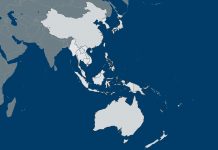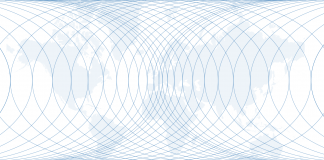International conferences for people in my profession are generally a thing of the recent past, having been replaced by virtual conferences via platforms like Zoom and Webex. I’ve attended three this month alone and many more in prior months. One question has been repeatedly raised, particularly at European conferences: What has happened to American leadership? It’s typically followed by another question of whether the United States is returning to isolationism. I am not at all clear what leadership means when there is little following. I am more baffled by the notion of a return to isolationism.
It is the concept of a “return” that confuses me, since the United States never isolated itself. It’s true that in the interwar period the U.S. tried to avoid going to war in Europe again. The U.S. became involved in the First World War to block a German victory and then withdrew its troops. The U.S. saw this as the war to end all wars, and the Europeans increasingly acted as if it were a truce within one war. The United States did not want to be dragged into another European bloodbath and was in no position to stop what was to the United States an endless European dynamic.
But while the United States sought distance from Europe, it was involved in Asia. It opposed Japan’s invasion of Manchuria by providing limited military force to China, engaged with the Philippines and maintained a substantial naval force in Hawaii. U.S. economic measures grew so intense that they triggered the attack by Japan on Pearl Harbor. For Europeans and what I might call Europeanists in the United States, the failure to engage in Europe is deemed isolation, and the substantial engagement in Asia is deemed irrelevant. The United States was not engaged in Europe because it reasonably believed it could have little influence there, and that expanding its influence would be too risky. The U.S. did not want to replay WWI, and was drawn into Europe by Hitler declaring war on the United States after Pearl Harbor. It is not clear what the U.S. would have done without this, but the desire not to get trapped in another European bloodbath was neither irrational nor irresponsible.
Once Hitler declared war, the United States inevitably assumed leadership. The American industrial plant was indispensable to Britain and the Soviet Union, and U.S. forces rapidly dwarfed the British in Europe. The United States was forced into a Pacific war by Japan and an Atlantic war by Hitler, not altogether by choice. It became the leader in both theaters because of the power it brought to bear. Leadership was the result of an imbalance of power.
After World War II, it became apparent to Washington that without a U.S. presence in Europe, the Soviet Union would dominate the Continent and in doing so threaten U.S. control of the Atlantic. So the U.S. stayed in Europe, sending troops, organizing the economy, rehabilitating Germany and so on. Most important, U.S. forces and the threat of nuclear weapons created what turned out to be a prudent if uneasy understanding between the United States and Europe. The U.S. imposed a unity on the fractured as part of this strategy. It was the leadership of the powerful over the weak.
All the while, the U.S. was intensely involved in the Pacific, fighting major wars in Korea and Vietnam that killed nearly 100,000 Americans. This was a unique period of U.S. history seen by allies as the new norm. But the United States was as involved as it was to confront a coalition of communist states. In creating an anti-communist coalition, the U.S. bore a substantial economic burden and incurred significant military risk. The only advantage was defensive – preventing the domination of both Europe and Asia by a rival power. Otherwise, there was little benefit.
The collapse of the Soviet Union and the evolution of China after the death of Mao Zedong changed the global reality dramatically. The Europeans signed the Maastricht treaty, which did not particularly concern the U.S., despite having little influence over the negotiations. Europe was now free to take its own course. Similarly, Asia (particularly Japan) was booming, and with China redesigning itself there was no reason for a massive presence there.
The American presence at both ends of Eurasia was not triggered by any real economic advantage. It was triggered by the American interest in maintaining the Atlantic and Pacific as buffers against Eurasian threats to the United States. In the 1990s, these threats faded, and therefore a new strategy was required. The new strategy emerged slowly. Washington did not abandon Europe; there were no significant enemies to speak of, the European economy was surging, and the need for American leadership weakened. Old habits die hard, and institutions such as NATO continued with a far weakened military capability facing a far weakened threat. Europe recognized as much and adjusted its defense policy so that it could focus on economic matters. In many ways, the American presence became anachronistic. In the past decade, the U.S. has focused on an unlikely Russian threat to Europe, placing U.S. troops in Poland and Romania. But with the European Union having a gross domestic product roughly equal to that of the U.S. and no significant military threat, the U.S. interest in Europe declines and the European need for the United States dissolves.
The United States is a two-ocean power. During World War II, both oceans mattered. During the Cold War, precedence shifted occasionally. Now, the dominant interest of the United States is containing Chinese naval power by controlling its littoral waters. The U.S. has a massive alliance system doing just that. Japan, South Korea, Taiwan, Singapore and Australia are formally or implicitly allied. Indonesia, Vietnam and India are not formally engaged but have interests parallel to those of the United States relative to China. It creates a line of containment from the Aleutians to the Strait of Malacca and into the Indian Ocean. As in the Cold War, the U.S. strategy is containment, and an alliance structure built around massive American power. It is designed to make a Chinese offensive too risky for Beijing while containing China at a high financial cost but low military risk.
So the answer to the original question – “What happened to American leadership”? – is that history has moved on and Europe can and does lead itself. Whatever risks Europe faces should be dealt with through European leadership, and where necessary, a degree of U.S. force can augment it. Interests demand that the U.S. focus on the Pacific, just as it has done since before WWII. American leadership is readily apparent there.
In other words, U.S. leadership goes where the U.S. has significant interest. Europe does not need American leadership in economics or defense. The U.S. has an overarching interest in Asia. It has no desire or means to compel significant European action, nor are the Europeans interested in giving it. The threat of a Russian invasion of Europe is small, but the U.S. has made prudent commitments in front line countries.
The U.S. is not isolationist, nor does it intend to be, nor will it be allowed to arbitrate European squabbles. The Europeans lived through a period of massive American economic and military involvement. That period is over. The alliance structures can stay in place, and meetings can be held with communiques issued, but history has moved on. So has the U.S.






